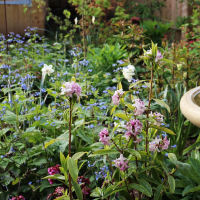This Forum will close on Wednesday 27 March, 2024. Please refer to the announcement on the Discussions page for further detail.
Transparent worms???
 NGLittleSeedlings
Posts: 729
NGLittleSeedlings
Posts: 729
I have just discovered what can only be described as a load of small transparent silvery worms on the compost in my dahlia tuber pots. I have never seen them before and they only seem to be in these pots on the surface of the compost, can anyone tell me what they are and if they do any damage? They are only a couple of mm long. Thanks.
0
Posts
Anyone???
Isn't it fascinating what life there is in soil? We need Nut's microscope
Gardening in Central Norfolk on improved gritty moraine over chalk ... free-draining.
The pots are on the top shelf on some 4 tier staging so I'm rather bemused how they got there unless they were on the tubers
Maybe the adults have wings
Gardening in Central Norfolk on improved gritty moraine over chalk ... free-draining.
Thanks for everyone's responses
There was a similar thread on here some time ago describing the same thing, then the final decision seemed to be they were harmless naturally occurring larvae of some description, but I can't remember what the name was.
Thanks Dave